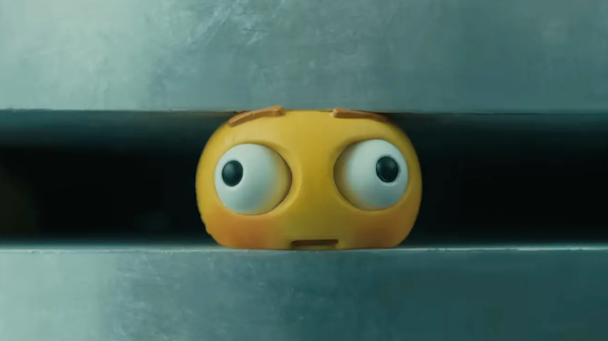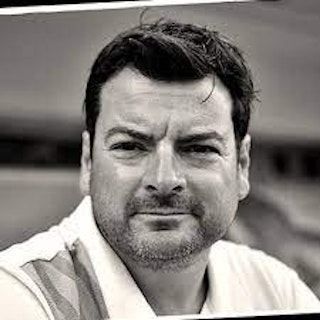Why do so many ads get panned or banned? And how can agencies stop dropping the ball?
Agency leaders offer insights into how to ensure that badly judged or inaccurate ads do not reach TV screens and billboards.

Apple's 'Crush' ad gad some eyes bulging as it missed the mark
Social media went into meltdown two weeks ago when Apple launched its badly judged ‘Crush’ ad. The ad involved creative paraphernalia, including a piano, paint pots and artwork, being destroyed in an industrial-scale hydraulic press in a bid to sell a very skinny iPad Pro.
Not to be outdone, dating website Bumble quickly followed suit, upsetting those individuals intentionally following a celibate lifestyle with a poster campaign suggesting that if you weren’t having sex, you were, well, a bit weird.
And how could we brush under the carpet the endless parade of TV, press and OOH ads that fall foul of advertising regulators for failing to tell the simple truth? UK bank Nationwide was a recent example, forced to pull an expensively produced ad because it told a few pork pies.
These ad incidents happen all too frequently, so who is to blame? The agency or the client?
The Drum asks how these ‘offensive’ ads make it through the production and sign-off process and what agencies should do to ensure these brand-damaging misjudgments are caught before they go public.
Test, test and test again
James Joice, managing director, Fold7: “Mitigating such misjudgments can be helped with a healthy dose of perspective – both external and internal. The external one is the easy bit. Some consumer testing, qual or quant, provides an abundance of that. The question then becomes what you choose to listen to and act on, but you’ll certainly know what ‘real people’ think. The internal one is far more difficult. Ensuring you don’t get too carried away and lost in your own thinking or your brand’s role in the world comes down to opinion and process. Reviewing and approving your work with the right people, at the right moments, in the right culture (one of openness and without ego) should keep you honest and keep the work real. It should also ensure you check your claims can be substantiated.”
Richard Exon, co-founder, Joint: “Apple made an ad that could have been pretty effective in communicating the core message about the new iPad – there’s more to it, but it’s thinner than ever. But they were blindsided by some pretty confected outrage once the film went public. Contrived or not, the outrage would have been entirely predictable if Apple had done even cursory testing, either pre- or post-production. Nationwide feels like a very different matter. The excellent campaign has captured exactly what millions of people feel about big banks and guess what? The big banks don’t like it. So, one of them complained and Nationwide got caught out on a technicality. The result? The film will be marginally re-edited and nothing much else will change, nor does it need to. Real people will still not like big banks much and Nationwide will continue to point to how they are different.”
Victoria Jordan, GM of branded content and creative, My Code: “Ultimately, this is about creating safe spaces to challenge ideas and having the right people in the room to do so. Having the right people in the room, people who are part of the cohort the brand is trying to reach, is key, and empowering those folks to poke holes is what will mitigate your risk of offense. Too often, we are in rooms where the dynamic is to defer to the opinion of the senior people in the room or the client paying the bills. Allowing for all opinions to be heard and respectfully debated is what’s key in pressure testing a concept. If you create safe spaces where teams and partners can have this honest discourse, you can strengthen your concept and create something that authentically resonates with your audience.
Laura Bianchi, head of integrated strategy, Madwell: “Creativity is complex. Because of the complexity, there isn’t a simple answer to guard against misjudgments. At the core of all agencies are the humans creating these ideas. Agencies that create a culture with minds that have diversity in thought, experience and expertise can look at any project with a greater perspective. The entire creative process is designed to refine an initial idea to one that enters the marketplace. Within those various touchpoints, biases get added. It can start at the beginning of a project with data points that focus more on lived experiences all the way through casting decisions. Facilitating a space where voices can be heard and provide perspective from their worldview is invaluable. At Madwell, we’ve created a Creative Review Committee designed to represent different departments, ages, seniority, race, ethnicity, geographical residences and gender. Putting the work through this committee allows for feedback and perspective from people less familiar with clients’ day-to-day, but can look at any work as a consumer might.”
Never stop challenging assumptions
Jef Loeb, founder, Brainchild Creative: “What if we call the squishy object smelly and recognize both Apple’s and Nationwide’s faceplants are rooted in initial strategic failure? That’s where the answer to your question has to start. Take Apple, as my creative partner observed. ‘You mean technology can now fit all this stuff in a thinner box?’ Gobsmacked, are we? It was dusty at the turn of the century. Worse, once bought, it propelled them to compound the laxity by turning their backs on a strategic pillar that’s sustained the brand since around January 22, 1984: it’s about expanding creativity, not the reverse. Nationwide is a little more of a straight line into the deep weeds since it’s pretty unarguable that ‘thou shalt not play fast and loose with the truth’ is planning 101. My too-long, short answer is to avoid your own walk down the street paved with flawed perceptions, look to your strategic battlements, shore up your planning guardrails and never, ever stop challenging assumptions from the first brief through to air date. And not then.”
Tom Stone, co-founder, Re:act: “It’s crucial to ensure a thorough vetting process from inception to release. A creative brief can often excite and entertain creatives because it allows us to have the flexibility to come back with something that’s going to cut through for the brand. But, ultimately, if you’re doing it under false pretenses of questionable claims, it’s really important that agencies are given this information up front in the briefing process and are watertight with their creative offering. To spot any gaps, this begins with assembling a team with diverse experience, ideally from former clients in our experience, who can identify potential legal pitfalls earlier on than, say, a more junior creative brand side who might not have experience with these issues. During the briefing stage, it’s essential to challenge client assumptions and thoroughly scrutinize claims for legal and R&D accuracy. By hiring individuals with experience across various industries, especially those where claims are prevalent eg beauty and FMCG, agencies can be equipped with the industry know-how to avoid any points of contention.”
The answer isn’t dumbing down
Jason Donnelly, marketing manager, Kubbco: “There’s a massive difference between ads people don’t like and ads blatantly making false claims. Is the answer to this constant struggle in the industry to dumb things down so much that people don’t have the opportunity to be offended or misled by a creative turn of phrase that could be read in more than one way? Case in point: an Apple ad that uses a huge hydraulic press to symbolize just how much they have jammed into the thinnest iPad ever. Do people think those instruments, art supplies and more were actually crushed to create the tech? Of course not. At the end of the day, the creatives behind the ads can’t prepare for people searching out things to be up in arms about.”
Josh Clarricoats, founder, Insiders: “Can adland ever stop making bad, or badly received, ads? I don’t think it can, really – not without accepting that to hold an opinion is to offend someone else. Yes, there are lawyers and there is testing and, of course, agencies and research, and they can all feed into an idea. And the UK has a lot more regulation around what is allowed, compared with some other countries. But ultimately, ideas are briefed or bought and that’s what you work with. It’s not an agency’s job to police its clients – there has to be trust on both sides.”
Kirsty Hathaway, executive creative director, Joan London: “Great advertising is all about pushing boundaries – which often means doing something entirely new – but it’s also about being authentic, honest and real with your audience. When venturing into the unknown or trying to re-engage with new audiences, it’s inevitable that brands will sometimes miss the mark, particularly when turning around ads at speed. The key to avoiding creative mishaps and even overt false claims is diversity of thought. Not every ad will be seen through the same lens, so having scripting, advertising and production teams made up of people with different backgrounds, education, experience and personalities at all levels of a business will help brands better understand how different audiences will react and therefore filter out potential pain points. As advertisers grapple with evolving cultural landscapes and increased open debates online, it’s more important than ever to tap into diverse thinking across all areas of the business.”
Daniel Gonzalez, creative director, Remezcla: “Lately, the ad council approach often appears paternalistic, exhibiting hypocritical double standards (as with Calvin Klein ads). Hinder creativity because it hinders creativity? Make it make sense. Consumer perception falls into two categories: People are savvy, or people are dumb. I believe in the former. People of all ages understand visual metaphors, recognizing the iPad as a creative tool rather than a creativity ’destroyer.’ Creative professionals likely used iPads to storyboard the commercial, which emphasizes one simple message: the new iPad is thinner. Full stop. In a crowded advertising landscape, agencies should continue to pursue bold storytelling. The ad isn’t offensive or deceitful. Apple should apologize for a lot of things – but this ad is not one of them.”
Honesty is the best policy
Dom Sweeney, head of creative, Innocean UK: “The best advertising starts with a truth. And if you want to avoid making errors of judgment, then you have to keep being brutally honest every step of the way. That usually involves getting out of your bubble and having uncomfortable conversations with people who don’t think like you do. Find out what people really think about your brand – I like the Apple ad and the reaction to it really surprised me. Still, clearly, people have a huge issue with big tech taking over the world and killing ‘real’ human creativity, which is why they misunderstood the metaphor. Good, honest research should have found that out. I like the Nationwide ad, too, but if you’re guilty of closing branches, then don’t make an ad about how you don’t close branches. We all want to dodge controversy, but not all of us are prepared to be honest with ourselves. And simply avoiding errors is the biggest mistake a brand can make. The easiest way to avoid errors of judgment is to make bland and unremarkable ads. As Ken Robinson said, ‘If you’re not prepared to be wrong, then you won’t come up with anything original.’”
